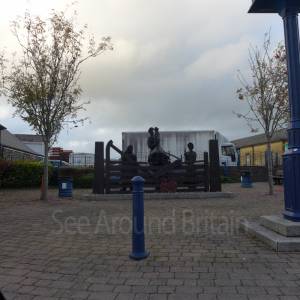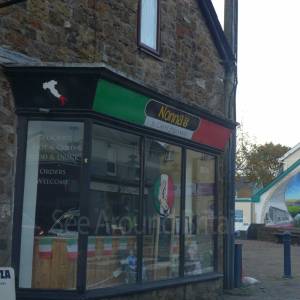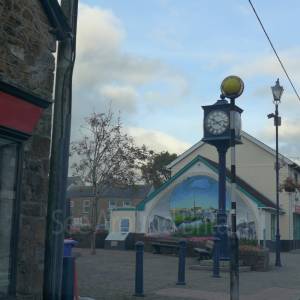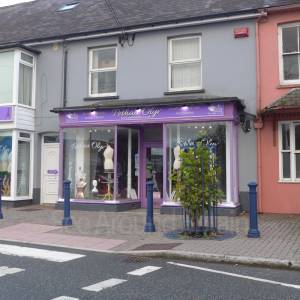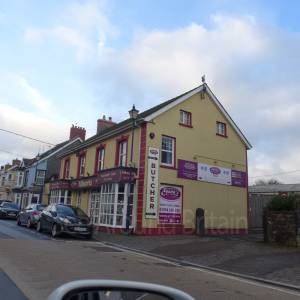The Rebecca Riots Sculpture, St Clears, Carmarthenshire
Details
Accessibility
Brief description
https://en.wikipedia.org/wiki/Rebecca_Riots
2025: "The Rebecca Riots (Welsh: Terfysgoedd Beca) took place between 1839 and 1843 in West and Mid Wales.[1] They were a series of protests undertaken by local farmers and agricultural workers in response to levels of taxation. The rioters, often men dressed as women, took their actions against toll-gates, as they were tangible representations of taxes and tolls. The rioters went by the name of Merched Beca which translates directly from Welsh as 'Rebecca's Daughters'. The riots ceased prior to 1844 due to several factors, including increased troop levels, a desire by the protestors to avoid violence, and the appearance of criminal groups using the guise of the biblical character Rebecca for their own purposes.[2] In 1844 an act of Parliament to consolidate and amend the laws relating to turnpike trusts in Wales was passed. By late 1843, the riots had stopped. Although Rebecca had failed to produce an immediate effect on the lives of the farmers she had sought to serve, the very nature of a leaderless uprising of the downtrodden peasantry in an attempt to obtain justice from an unfair system, was an important socio-political event within Wales.
In the aftermath of the riots, some rent reductions were achieved, the toll rates were improved (although destroyed toll-houses were rebuilt) and the protests prompted several reforms, including a royal commission into the question of toll roads, which led to the South Wales Turnpike Trusts Act 1844[a] (7 & 8 Vict. c. 91). This act consolidated the trusts, simplified the rates and reduced the hated toll on lime movement by half. More importantly, the riots inspired later Welsh protests. These included opposition to the privatisation of salmon reserves on the River Wye in the 1860s and 70s, which became known as 'the second Rebecca riots', and the formation in the 1970s of the radical arts collective known as the Beca group.[21]
As late as December 1910, the historic horn used to gather the Rebeccaites was sounded during the general election campaign to signify the arrival of the car carrying Liberal candidate John Hinds for a meeting at Bethania Chapel, Talog.[22]
The toll house near Porthmadog, at the south-eastern end of the Cob, was built for collection of the tolls which were introduced when the long embankment opened in 1811. A tariff of toll charges from the 19th century is still to be seen on the front of the building. The Cob’s private operator was authorised by an 1807 act of Parliament, Madocks' Estate Act 1807 (47 Geo. 3 Sess. 2 c. xxxvi), to levy tolls on road vehicles which crossed. In April 1978 the rights were purchased by a local body called the Rebecca Trust, which continued to levy a 5p toll per vehicle for 25 years. Surplus funds were distributed annually to local good causes. Tolls ended on 29 March 2003, after the Welsh Government bought the Cob from the trust."
Address
Rebecca House, Pentre Rd, St Clears, Carmarthen SA33 4LR, UK
Phone
Website
https://simonhedger.com/portfolio/rebecca-riots
Directions
Opening Times
Always check with the venue directly for up-to-date information including opening times and admission charges as they may be subject to change
Transport
Amenities
Travel Information
For further travel information in Wales please see: www.traveline.cymru/travel-info
Or call Traveline Cymru on 0800 464 0000


